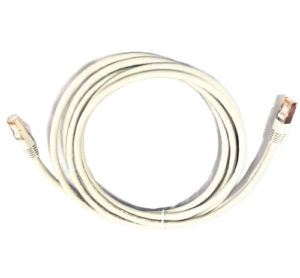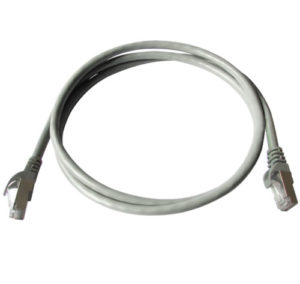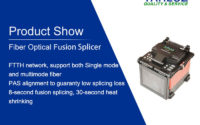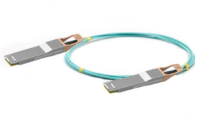The difference between CAT6 and CAT6A Network Cable
With the popularization of multimedia applications such as high-definition video and video conferencing, people’s demand for network bandwidth is getting higher and higher, and 1 Gbps is gradually being replaced by 10 Gbps. Therefore, the super five types of network cables supporting 1 Gbps transmission are gradually fading out. CAT6 network cable and CAT6A network cable are the more common network cable products on the market.
What is the CAT6 and CAT6A cable?
The CAT6 cable usually refer to CAT6 unshielded network cables, which are the sixth-generation standard Ethernet network cables. They conform to the six standards of ISO/IEC 11801:2002 and EIA/TIA 568B, and their bandwidth is twice that of the super five network cables. And the transmission performance of CAT6 is much higher than the super five network cable, and is most suitable for the network transmission application of the gigabit rate.

The CAT6A cable is an upgraded version of the CAT 6 network cable, so it is also called “Enhanced CAT 6 Network Cable” and complies with the standards of ISO/IEC 11801:2002 and EIA/TIA 568-B.2-1. The performance of the other aspects is better than the CAT6 network cables. Compared with the six types of network cables, the outer diameter of the CAT6A network cables is larger. The weight is heavier and the minimum bending radius is larger, and the maximum transmission distance of the super six types of network cables is 100m, and it can be compatible with the CAT6 and super five types of network cables.

Classification of CAT6A network cable
1. Unshielded CAT6A network cable. The method of increasing the distance between the cores and the non-metal filler is often used to reduce the alien crosstalk, and therefore, the unshielded CAT6A of network cables have a large diameter. The advantage of the unshielded CAT6A network cable is that the termination is simpler and more convenient and time-saving because there is no shielding layer. In addition, the price of unshielded CAT6A network cables is lower, and the price of unshielded patch panels used with them is also lower.
2. Shield CAT6A network cables. There are two types of shielded CAT6A network cables: U/FTP and F/UTP. U/FTP has no total shielding layer. The anti-crosstalk performance of this shielded network cable is very high, but it is troublesome when it is terminated. It is necessary to process each aluminum foil first. The wire pair shield is then terminated. The F/UTP total shield is aluminum foil shielded. There is no wire pair shield. The production process of this wire is more complicated, but its diameter is smaller than the U/FTP cable, and the termination process is simpler.
The Difference between CAT6 and CAT6A
1. The transmission frequency
The speed of transmission of the CAT6A network cables is different. The transmission frequency of the CAT6 network cables is 250MHZ, which supports the network speed of Gigabit. The transmission frequency of the CAT6A network cables has been upgraded on the CAT6 network lines, reaching 500MHZ and supporting 10G network speed. This is the difference between the transmission frequencies of the two.
2. The outer skin logo
In order to distinguish between the two, there is a difference in the production of the outer skin. Generally, there will be information of the manufacturer, the network cable logo and the scale.
3. The core conductor
The conductor materials of the CAT6 unshielded network cables are 0.545±0.02mm, and the other types and super six types of conductor materials are 0.57±0.02mm.
Conclusion
In summary, the CAT6A network cables are better than the CAT6 network cables in terms of performance. As for which one to choose, it needs to be decided according to the actual application. If you are using a 1Gbps network, it is recommended that you purchase a Category 6 cable or a Category 6 cable. If you are using a 10Gbps network, CAT6A cable will more suitable for you.


